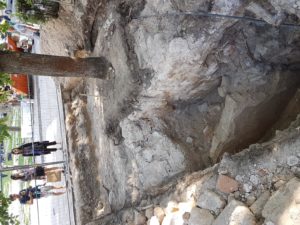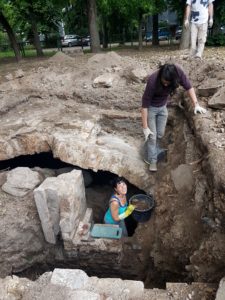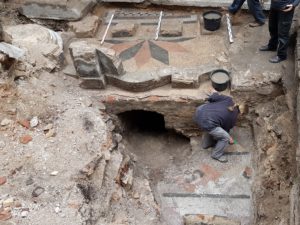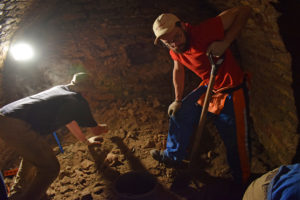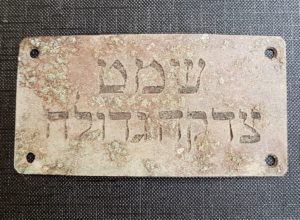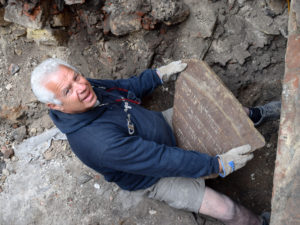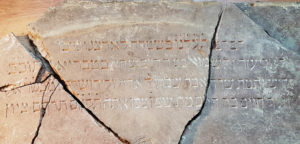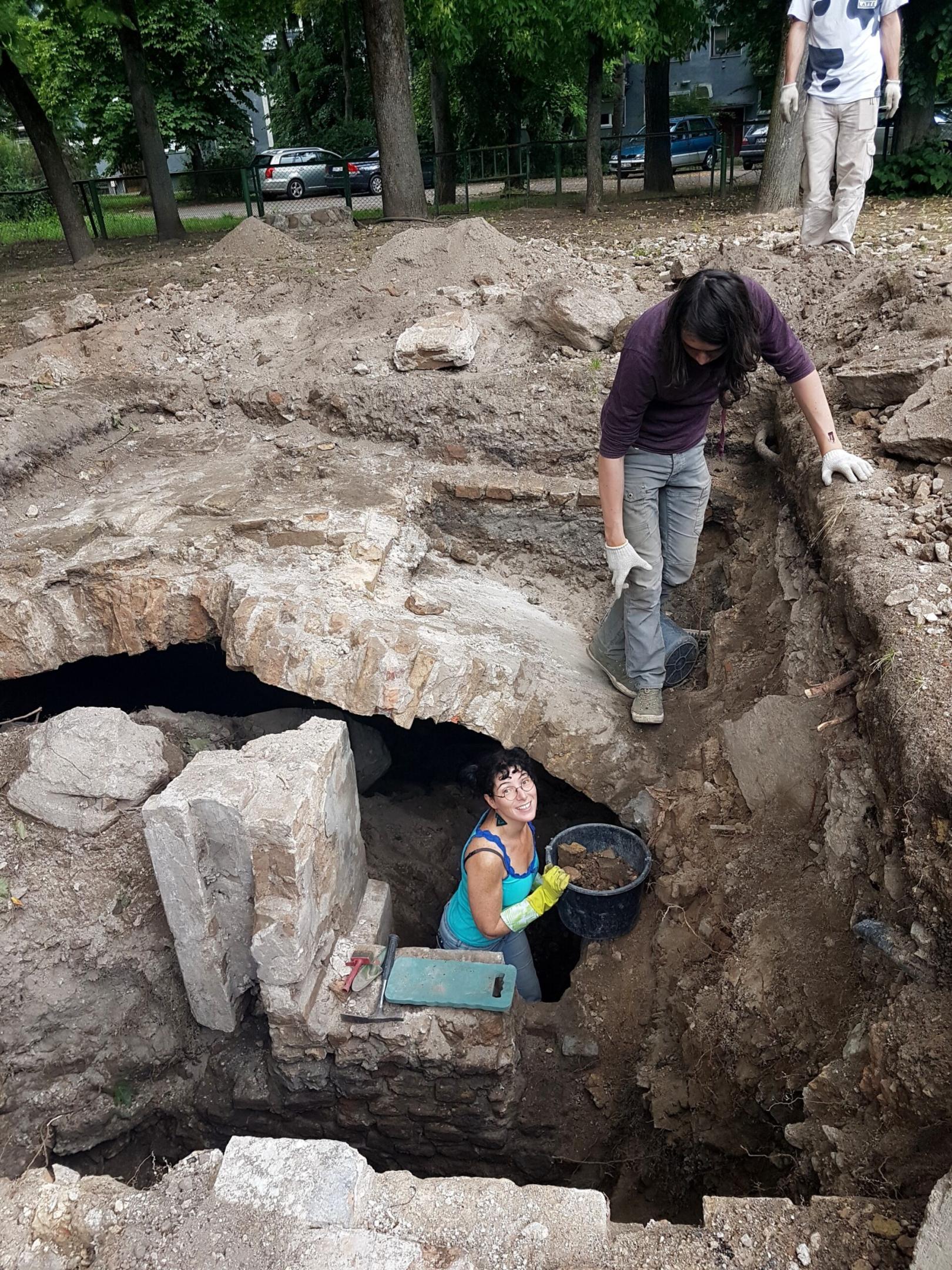For the first time since it was burned in the Holocaust and destroyed – Hebrew inscriptions from the excavations of the Great Synagogue in Vilnius (Vilna) are exposed.
The researchers, from the Israel Antiquities Authority and Kultūros paveldo Išsaugojimo pajėgos of Lithuania, invite the public to add information about the figures mentioned in the 200-year-old inscription.
An exciting discovery in Lithuania: for the first time since the beginning of the excavation project to expose the Great Synagogue of Vilna, which was burned during the Holocaust and demolished by the Soviets, Hebrew inscriptions were discovered.
According to the researchers, Dr. Jon Seligman of the Israel Antiquities Authority and Justinas Račas of the Kultūros paveldo Išsaugojimo pajėgos of Lithuania, who have conducted excavations in Lithuania every summer for the last four years, “the large and significant inscription, dated to 1796, was part of a stone Torah reading table that stood on the magnificent Bimah of the synagogue in Vilnius.
3D visualization of the Great Synagogue of Vilna during its glory days. Credit: Inlusion Visual Studios
The table was donated – according to the text – by two brothers – Rabbi Eliezer and Rabbi Shmuel, in memory of their mother, Sarah, and their father, Rabbi Chaim, who, according to the inscription, had emigrated from Lithuania to Eretz Israel and settled in Tiberias. It was from this table that the Torah was read to the congregants for about 200 years, until the burning of the synagogue and its final destruction by the Soviets, 70 years ago.
The inscription, which was studied together with Dr. Vladimir Levin of the Hebrew University of Jerusalem, reads this: “In the year “Raise us with joy to our country” [=1796]. [This Torah reading table] was donated by R. Eliezer and R. Shmuel, the sons of R. Chaim who lived in Tiberias, be it rebuilt and reestablished soon in our days. “And died Sarah” [Gen. 23:2] our mother, the daughter of R. Shabbtai, on the 4th of Adar “I gave to Jerusalem a messenger of good news” [Is. 41:27] [=1782] and our father R. Chaim son of R. Chaim died there on the 7th of Nissan “arise and have mercy on Zion” [Ps. 102:14] [=1786].”
These brief sentences point to the deep connection between the Lithuanian (Litvak) community and the Holy Land, which has existed since the days of the Gaon of Vilna until the present day. According to the preliminary investigation the donor family was one of the leading rabbinical families in Lithuania at the beginning of the 18th century. Due to the absence of the family name in the inscription, the information we have is not complete, and we invite the public to complete the puzzle and provide information about the family through the Facebook page of the project.
Another personal greeting from the past was discovered in the form of a seating plaque, for the head of the “Tzedaka Gedola” association, which managed the Great Synagogue of Vilna from the end of the 18th century until 1931. “These are the discoveries that fascinate us most: it is the personal objects that provide a direct connection to people, to those who prayed here, that immediately ignites the imagination,” the researchers say.
The excavation of the Great Synagogue in Lithuania is a joint venture of the Israel Antiquities Authority, the Kultūros paveldo Išsaugojimo pajėgos of Lithuania, the Good Will Foundation, and the Jewish Community of Lithuania. According to Israel Hasson, Director of the Israel Antiquities Authority, “The project of exposing the historic Great Synagogue of Vilna is part of the IAA’s ‘Heritage without Borders’ concept, which also includes the research of sites outside the borders of the State of Israel. This arises from the perception that the IAA was entrusted by the Israeli public to serve as the ‘watchtower’ on its behalf for the protection of heritage and cultural assets”.
This year’s excavation, with the participation of a team of Israeli, Lithuanian and international archaeologists and volunteers, uncovered large sections of the magnificent synagogue Bimah. The Bimah, which originally was two stories tall, was built in the 18th century by means of a donation from the well-known Jewish philanthropist, the Yesod. “The decorative Baroque Bimah, which was documented in photographs from the early 20th century, was a two-story structure set between four magnificent pillars that supported the ceiling. Between these columns, and on the front of the Bimah, cantor read the Torah to the congregation for 300 years. An interesting discovery was the terrazzo floor, which was colorful and elegant. Below the Bimah, and also unknown to the researchers was a large cellar. Among the finds recovered during the excavation were a prayer book that survived the Holocaust, hundreds of coins from the 16th to 20th centuries and buttons of Napoleon’s army, which passed through Vilnius on its way to defeat in Moscow in 1812.
“The discovery of the pillars of the synagogue, the central parts of the Bimah and the inscription, attest to the potential inherent in the continuation of the excavation at the site and the exciting possibility of presenting the remains of the Great Synagogue of Vilna and Shulhoyf (synagogue courtyard) in the future to the public.”
